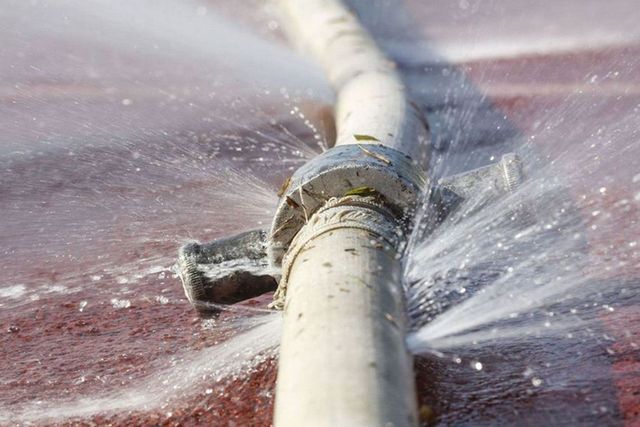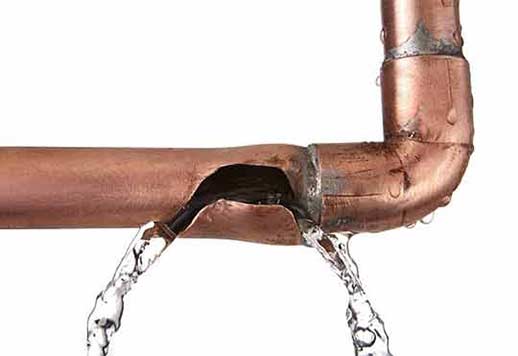Preventing Burst Pipeline: Important Tips to Protect Your Plumbing
Avoiding ruptured pipes is an important worry for home owners, specifically during cooler months when the threat of cold is enhanced. Executing calculated actions such as correct insulation, regular examinations, and maintaining regular interior temperature levels can considerably decrease the possibility of pipeline failing. In addition, recognizing emergency situation procedures gears up homeowners to respond promptly to potential plumbing concerns. Nonetheless, many are uninformed of the certain vulnerabilities that their pipes may face. Exploring these susceptabilities can give invaluable understandings into safeguarding your plumbing system efficiently.
Understand Pipeline Vulnerabilities
Comprehending pipe susceptabilities is vital for effective plumbing upkeep and protecting against pricey damage. A number of variables add to the sensitivity of pipes to ruptureds, including material make-up, age, and environmental problems. Older pipes, particularly those made from galvanized steel or polybutylene, typically break down gradually, causing increased danger of ruptures and leaks.
Temperature level fluctuations can additionally considerably effect pipeline integrity. In cooler environments, water trapped in pipelines can ice up, expanding and putting in stress on the pipe walls, which may eventually lead to a ruptured. High water pressure can strain pipelines, specifically at joints and bends, heightening the possibility of failure.

Insulate Pipeline Effectively
Proper insulation of pipelines is vital for protecting against cold and subsequent ruptureds throughout cold weather condition (burst pipe). Shielding your pipes system efficiently safeguards against temperature level goes down that can cause expensive damage. Begin by determining at risk areas where pipes are subjected to exterior temperatures, such as basements, attics, and outside walls
Usage foam pipe insulation sleeves or wrap insulation tape around these locations to provide a protective barrier. Make sure that all areas of the pipes, specifically those with minimal warm direct exposure, get ample insulation. Pay unique focus to installations and joints, as these are extra prone to freezing.
When shielding, it's necessary to select materials that fulfill local building codes and are appropriate for the particular setting. Fiberglass insulation is typically recommended for its thermal resistance residential properties. Furthermore, consider utilizing heat cable televisions or tape in extreme problems, which can be connected in to supply supplemental warmth
Regularly examine shielded pipelines for any type of indicators of wear or damage, as compromised insulation can diminish its effectiveness. By taking these proactive procedures, you considerably minimize the risk of pipeline bursts, making certain a trustworthy plumbing system throughout the winter season months.
Maintain Consistent Temperature Level
A steady indoor temperature is vital for avoiding burst pipes throughout the frigid months. When temperatures decrease, water within pipelines can freeze, increasing and creating pressure that might eventually cause the pipes to ruptured. To alleviate this threat, house owners should maintain a constant temperature level throughout their living space, ideally no less than 55 ° F(13 ° C)Making use of a programmable thermostat can aid manage interior temperatures properly, guaranteeing that spaces with pipes remain warm even when the house is empty. Pay special interest to locations that are extra vulnerable to cool, such Recommended Reading as basements, garages, and attic rooms. Maintaining closet doors open under sinks can likewise allow warmer air from the home to circulate around plumbing.
In addition, it is prudent to enable faucets to drip a little during extreme cold spells. This minor circulation of water can stop cold by alleviating pressure within the pipes. Throughout especially severe weather condition events, consider briefly putting on hold any nighttime obstacles on your thermostat to maintain a stable cozy environment. By implementing these approaches, property owners can substantially lower the danger of pipe ruptureds and guard their pipes systems versus the severe winter season elements.
Consistently Examine Pipes
Routine assessments of pipes systems are critical for protecting against ruptured pipelines and preserving total home integrity. During these assessments, it is necessary to check out read this post here noticeable pipelines for indications of rust, leaks, or wear.
Additionally, checking connections and joints is essential, as these factors are usually prone to leakages. House owners ought to likewise analyze water pressure levels, as excessive stress can stress the pipes system and increase the risk of pipeline ruptureds.
Take into consideration scheduling professional plumbing examinations a minimum of yearly, especially before winter, to guarantee your system is planned for cooler temperature levels. Normal examinations not just aid in recognizing prompt problems yet additionally foster long-term maintenance techniques that can improve the life expectancy of your plumbing system. By being positive in your technique, you can secure your home versus the costly and turbulent consequences of ruptured pipes. Focusing on plumbing assessments is an investment in your home's health and wellness and safety.
Know Emergency Treatments
Recognizing emergency treatments is vital for every house owner, especially after carrying out normal plumbing evaluations. Being prepared for a plumbing emergency situation can significantly mitigate damages and save expenses.
Following, keep important tools useful. A pipes emergency situation package need to include a wrench, bettor, and towels, in addition to a flashlight and a pail for small leaks. In addition, take into consideration having the contact info for a relied on plumbing technician easily offered, ought to Full Article the circumstance escalate past your control.
If you identify a leak or ruptured pipeline, quickly shut off the supply of water and inform your plumbing. Furthermore, document the damage with photographs for insurance functions. burst pipe. Understand the signs of prospective pipes issues, such as unusual water pressure fluctuations or damp places on walls
Ultimately, aggressive understanding and swift action are important in managing plumbing emergencies, ensuring your home continues to be safeguarded and decreasing potential damages.

Verdict
To conclude, preventing burst pipelines requires a complex technique that includes understanding pipeline susceptabilities, proper insulation, maintaining regular indoor temperature levels, regular inspections, and understanding of emergency situation treatments. By carrying out these vital methods, the danger of plumbing failures can be dramatically reduced, thus guaranteeing the longevity and performance of the pipes system. Proactive actions not only guard against prospective damages yet likewise add to general water conservation and the protection of residential or commercial property.
In cooler climates, water entraped in pipelines can ice up, expanding and putting in pressure on the pipeline wall surfaces, which may eventually lead to a ruptured. When temperature levels decline, water within pipelines can freeze, producing and broadening stress that might eventually cause the pipes to ruptured. By implementing these methods, home owners can significantly reduce the threat of pipeline bursts and protect their plumbing systems versus the rough wintertime components.
